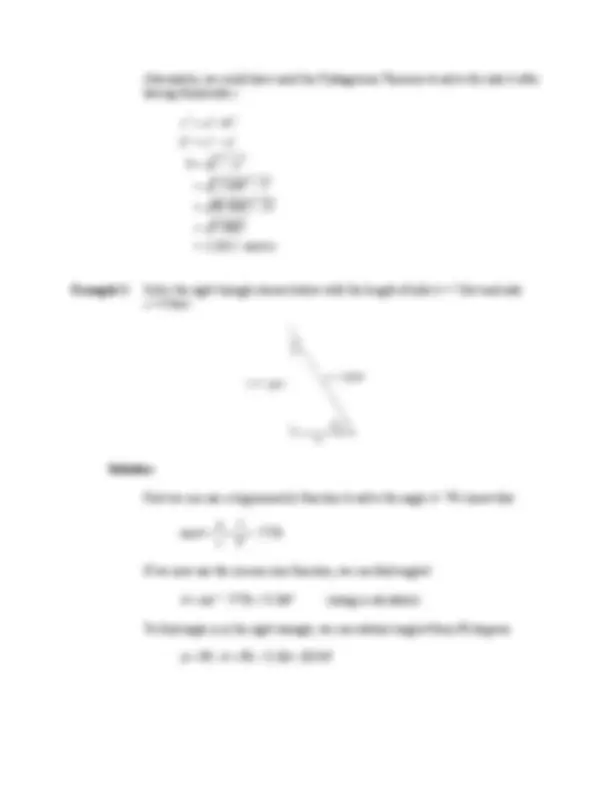




Study with the several resources on Docsity

Earn points by helping other students or get them with a premium plan


Prepare for your exams
Study with the several resources on Docsity

Earn points to download
Earn points by helping other students or get them with a premium plan
Community
Ask the community for help and clear up your study doubts
Discover the best universities in your country according to Docsity users
Free resources
Download our free guides on studying techniques, anxiety management strategies, and thesis advice from Docsity tutors
How to use trigonometric functions to find the angles and sides of a right triangle given the values of two sides or one side and one acute angle. It includes examples and the use of inverse trigonometric functions.
Typology: Study notes
1 / 4

This page cannot be seen from the preview
Don't miss anything!



In this section, we are interested in using trigonometric functions to compute the values of all angles and sides of any right triangle, given the value of any two sides of the triangle or the value of one side and one acute angle. This process is called “solving the right triangle.”
sin
cos
tan
Opp Hyp
Adj Hyp
Opp Adj
θ
θ
θ
csc
sec
cot
Hyp Opp
Hyp Adj
Adj Opp
θ
θ
θ
In order to solve right triangles given the lengths of two sides or one side and the value of one acute angle, it will be necessary to compute the value of a trigonometric function of one of the angles. We can use a calculator to do this.
We may also need a calculator to compute the value of an inverse trigonometric function, that is, the value of an angle given the value of a trigonometric function of that angle. The inverse function of a sine function, for example, can be written as sin -1^ or as arcsin.
° =. So for the inverse function, we may write
sin 1 3 60 2
− (^) = ° , or arcsin 3 60 2
Example 1: Solve the right triangle shown below with the length of side a = 5 meters and angle θ = 25°.
Solution:
We are given the value of one of the angles, so we can find the value of the other acute angle of the right triangle by subtracting from 90 degrees.
angle φ = 90 – θ = 90 – 25 = 65°
Now we can use a trigonometric function of one of the angles to compute the length of one of the unknown sides. (Use a calculator to find the value of the trigonometric function for a given angle.)
a c
c
=
=
(^5) 5. .
c = = meters
To compute the length of the other unknown side, we can use another trigonometric function of the angle.
b a b
=
=
b = 5(.4663) =2.3315 meters
Example 2 (Continued):
Finally, we need to solve for side a.
cos cos 51.06. 9
a a c
θ = ° = = =
a = 9(.6285) =5.6565 f eet
Alternatively, we could have used the Pythagorean Theorem to solve for side a.